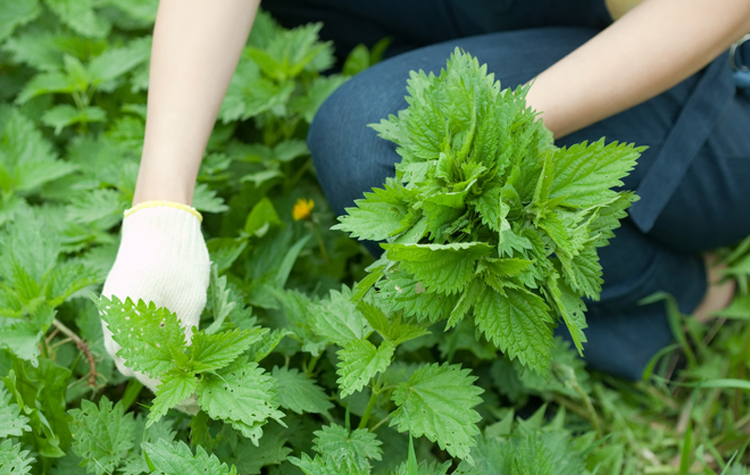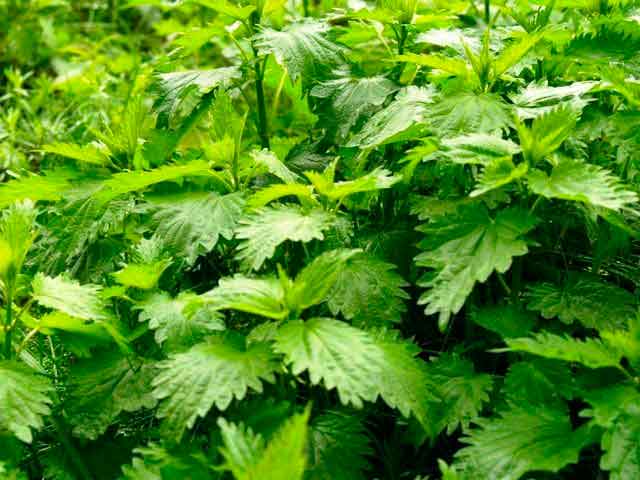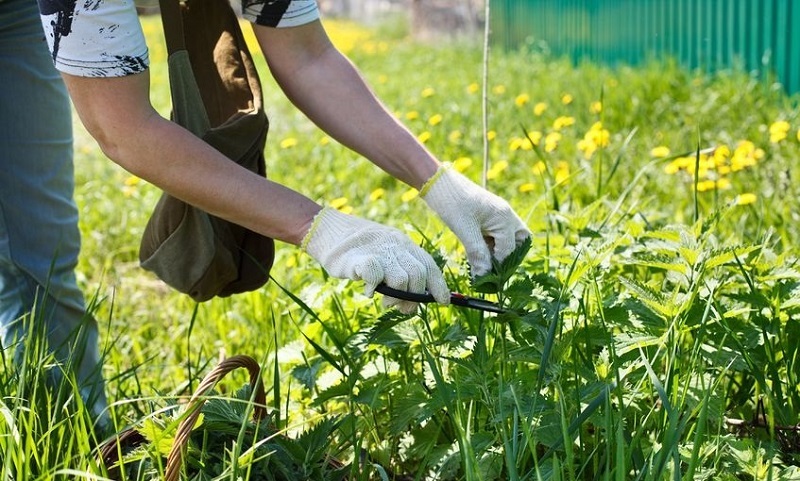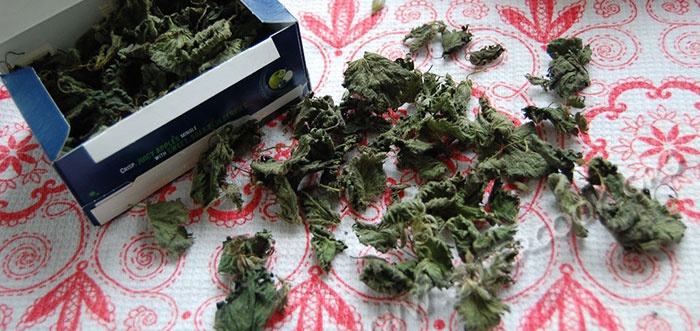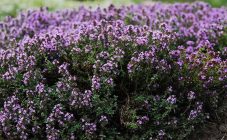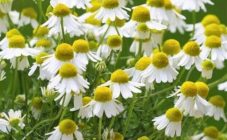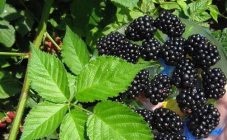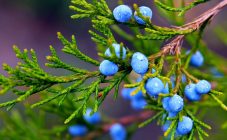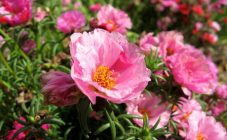Content:
Nettle is widespread - it can be used for medical, culinary purposes or for the manufacture of cosmetics. Dried leaves or seeds are easy to find on sale. If you want to harvest the plant yourself, this article will tell you in detail how you can do this.
Collection
The time to harvest nettles is June, July and August. The choice of this period is due to the fact that this is the time when nettle blooms. If nettles are mowed in summer, it is possible that, growing back, it will bloom again in early autumn. In this case, the collection season can be continued. During the winter, the collection is not carried out for obvious reasons.
Not every day is equally suitable for this procedure. It is best to choose clear weather, when the dew has already disappeared from the plants. It is believed that harvesting on the lunar calendar after the full moon will yield the most useful blanks.
But the specified order is suitable for those who want to get leaves, flowers of a plant. If you need nettle roots, it is preferable to collect it during the spring or autumn months, up to frost.
If you plan to use the nettle for cooking, cosmetic purposes, or freezing, you can also harvest the leaves throughout the spring.
Although this plant is common, it is not recommended to harvest it wherever it is found. Ecologically clean territories are most suitable for this.
In particular, this means that the following situations should be avoided:
- If there is a cattle burial ground in a given area, then it is absolutely impossible to collect nettles for food here;
- In the immediate vicinity of highways, not only dust and dirt settle on plants, but also various harmful substances that are part of the products of gasoline combustion. If the nettle is frozen, all these substances will remain in it;
- If in a given area there are industrial enterprises operating now or operating in the recent past, then they are a very real threat of environmental pollution;
- If in this area there are rail links nearby, collecting nettles will not be correct;
- For agriculture, it is customary to use various mineral fertilizers. In places where they are stored, leaks and the ingress of such substances into the soil are quite possible. Therefore, it is not recommended to collect nettles in their vicinity;
- The surroundings of construction sites of various kinds are not a suitable place for collecting;
- Any locality must collect and dispose of various garbage. It often accumulates in specially designated landfills. Their surroundings are not suitable for collecting plants.
Important! Violating these rules, people take great risks. Using such nettles can cause serious harm to health.
Nettle is dioecious: the seeds are tied in August and can be harvested until the end of September.
Since this plant is capable of burning the skin when harvested, it is recommended to produce it with gloves to protect the hands. If we are not talking about individual plucked out stems of a plant, but about its mass harvesting, this can be done using a sickle or scythe. In this case, the nettle thorns will not work on the skin.
In this case, you need to understand that these instruments require skillful handling and are very sharp, which can cause bleeding when cut.Therefore, it is better when they are used by those who already know how to handle them.
On a note. There is an observation that when nettles are harvested for drying, if you knock them down, tilt them before picking them without tearing, the burning properties will greatly weaken. This will help to better protect against stinging effects during collection.
If the goal is leaves, then the following should be considered. Tearing off the leaves during the harvest is a tedious task, in other words, a waste of time. The stalks of the nettle break off with difficulty, rather turn into a kind of washcloth. Therefore, it is beneficial to prune branches with leaves. It is convenient to do this using, for example, garden shears. After collecting, after a short period of time, the leaves will wilt slightly and it will be much easier to separate them than before.
It is convenient to simply cut off only the upper branches of the plant with scissors during collection. Similarly, you can collect nettles for medicine, collect nettle seeds.
Plant selection
Getting started harvesting it is important to understand that not every plant will be equally useful. To correctly collect nettles, it is recommended to follow the rules:
- You need to carefully examine the leaves. Not only should they look healthy, they should also be free of evidence of parasite activity and various traces of contamination;
- If the stems and leaves are clearly shrouded in cobwebs, then it is not recommended to collect such material for treatment;
- It makes sense to evaluate the surface of the nettle leaves. They should be smooth and free from inclusions;
- A strong stem and many leaves on it is a good sign;
- You also need to pay attention to the color of not only the leaves, but the entire plant. It should be flat.
The harvested plants are subsequently dried or frozen.
Drying
After collecting the plant, it must be thoroughly dried.
This is usually done in places like this:
- it is convenient to lay out the collected stems in the attic;
- the gazebo will also be one of the places where you can dry the collected nettles with high quality;
- if it is not possible to use the above options, you can make a canopy in a quiet and secluded place and organize drying under it;
- for this purpose, terraces can be arranged.
In all the cases considered, when drying, thinking about how to store the nettle, you can avoid direct sunlight. At the same time, high-quality ventilation of the collected plants occurs.
Before drying, the resulting material must be prepared. To do this, it must be scattered on a flat surface and carefully viewed. In this case, it is necessary to remove lumps of dirt, damaged parts of the plant. If parts of other plants come across, they will also need to be removed.
For drying, before using the plant for any medicinal purposes, the stalks of the nettle are placed on sheets of plywood or on canvas. It is considered the best option when the layer thickness does not exceed four centimeters. The flowers of the plant are treated separately. They are laid out to dry in a thin layer. During the day, it is advisable to turn the plant over several times. Usually, if drying is carried out outdoors, the plant is brought into the room at night, and in the morning it is exposed again to the air.
The duration of the process can vary greatly, depending on the weather, from the day of the calendar. When it comes to hot days, drying will be short-lived. If the weather is predominantly wet, then the plant needs to be held in the air for some time, let it dry a little and ventilate. After that, the process will need to be continued indoors. In this case, the plant should be laid out on gauze or on a net. This will improve ventilation while drying. In the future, if necessary, you can start freezing the plant.
Intensive drying
Although you can dry the nettle in the usual way by laying it out on a flat surface, there are also ways where the process is more intense.
In this case, the temperature regime according to the instructions provides for the use of a temperature range from 59 to 60 degrees. It will be convenient to use a special drying chamber here; in its absence, a Russian stove will do.
To check that the temperature is correct, you need to do the following. They throw a small piece of paper inside and see what happens next. It is important that it does not start to burn or turn yellow. In this case, you can put nettles there to dry.
It must be remembered that it is not allowed to close the chimney in the first two hours. In this case, the shutter must be placed on two bricks and the upper edge made slightly open.
Drying can also be organized in a conventional oven. In this case, you need to make the minimum combustion intensity, and leave the door ajar.
The readiness of a material can be determined based on the following characteristics:
- If you try to bend the dried leaf, the central vein will break;
- The color of the leaves becomes dark green and at the same time saturated;
- If you run your fingers over the surface of the sheet, its surface will feel rough;
- The smell is somewhat similar to that of hay. Herbal aroma is felt;
- If tasted, it will contain a distinct bitter undertone.
Storage
The harvested and thoroughly dried plant can be stored for two years, consumed either dried or frozen.
In the event that there is no need to use the nettle for such a long period, you can use another method of storage. For this, the dried material is placed in glass jars with ground lids. However, then the shelf life cannot exceed one month.
Putting the plant in the refrigerator can solve the problem of how to keep the nettle fresh for longer.
It is also permissible to use cloth bags, boxes made of cardboard, plain paper bags, plywood or wooden boxes.
After the nettles are collected and packed, they are taken to a dry place where good ventilation can be provided. If bags or bags were used, you can hang them on the walls for storage, or you can use the refrigerator freezer.
You need to attach labels, which indicate the date from which the shelf life is calculated. When the term has expired, even if the species has survived, it is better not to use the plant.
When choosing whether it is possible to freeze nettle or store it dry, it should be taken into account that when processed in both ways, the bulk of the nutrients is retained in it.
Medicinal use
This plant is part of many remedies that are used in traditional medicine. This is due to the fact that nettle contains many useful substances. In particular, it is rich in vitamin K, which has anti-inflammatory effects. It also contains calcium, flavonoids, formic acid and others.
She has found active use in:
- cosmetology;
- gynecology;
- pharmacology;
- other areas.
In order to feel the healing effect of nettle, it is enough to make tea or cook soup from it. May nettle can be used in salads.
This plant helps to remove harmful and toxic substances from the body. If you take a course of treatment, it has a general strengthening effect in the treatment of certain skin diseases.
The presence of beta-carotene in nettle indicates that its use has a beneficial effect on the organs of vision.
The strong antioxidant effect is due to the presence of flavonoids, iron, vitamins E and group B, coumarins and chlorophyll.
Contraindications
This plant enhances blood clotting, so it is not recommended to use it for patients with atherosclerosis or those who suffer from varicose veins.
You should not get carried away with the use of nettle also for those who have kidney problems.
During pregnancy, early labor can be provoked in this way.
If there are tumors in the body, this is reason enough to refrain from consuming nettles.
Who can use
In a number of cases, this plant can provide invaluable assistance to the body:
- Helpful for hair loss;
- Helps treat skin conditions;
- Helps against dandruff, brittle hair, excessive oily hair;
- It can be taken as an anti-inflammatory agent;
- Improves the quality of hair, makes it thicker, and gives it a beautiful shine.
All nutrients will be retained when drying nettles. This plant can be used throughout the year.
